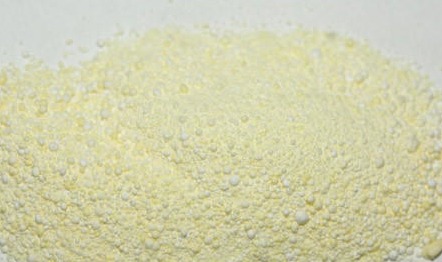IUPAC Name
Disodium peroxide
Cas Number
1313-60-6
HS Code
28153000
Formula
Na2O2
Industry
-
Appearance
Light Yellow Granular
Common Names
Sodium superoxide, Disodium dioxide
Packaging
1000 @ 25 kg PP/PE bags, 25 MT
420 @ 50 kg PP/PE Bags, 21 MT / 20FCL
25 @ 1 MT Jumbo bags, 25 MT / 20`FCL
20 @ 750 kg PP/PE bags, 15 MT/20 FCL
Brief Overview
Sodium peroxide is an inorganic compound. It is a sodium product that is ignited in excess oxygen and turned into a yellow, granular form. This substance acts as a strong basic anhydride and can therefore react with acids and with strong reducing agents in redox reactions. It is highly insoluble thermally stable sodium source suitable for glass, optic and ceramic applications. Its octahydrate form, which is simple to prepare, is white, in contrast to the anhydrous material.
Manufacturing Process
Sodium peroxide can be prepared on a large scale by the reaction of metallic sodium with oxygen at 130–200 °C, a process that generates sodium oxide, which in a separate stage absorbs oxygen.
4 Na + O2 → 2 Na2O
2 Na2O + O2 → 2 Na2O2
It may also be produced by passing ozone gas over solid sodium iodide inside a platinum or palladium tube. The ozone oxidizes the sodium to form sodium peroxide. The iodine can be sublimed by mild heating. The platinum or palladium catalyzes the reaction and is not attacked by the sodium peroxide.
Applications of Sodium Peroxide in different industries:
In soap and detergent industry, sodium hydroxide is used as saponification in soap making. As an ionic compound, sodium hydroxide is a strong base capable of increasing solution pH, buffer against pH changes, and drive pH-dependent chemical reactions.
It is popularly used to bleach woxxczod pulp for the production of paper and textiles.
It can be hydrolyzed to give sodium hydroxide and hydrogen peroxide according to the reaction.
It is used to dye and print textiles.
It is used in rendering air charged with carbon dioxide respirable as in torpedo boats, submarines, diving bells.
It serves as a catalyst in the polymerization of styrene to polystyrene.
This can sometimes be used as an intermediate in the synthesis of sodium perborate and sodium carbonate peroxohydrate, which are used as bleaching agents in the paper and textile industries.
It can be found as an ingredient in disinfectants, antispetics, and pharmaceutical products.
